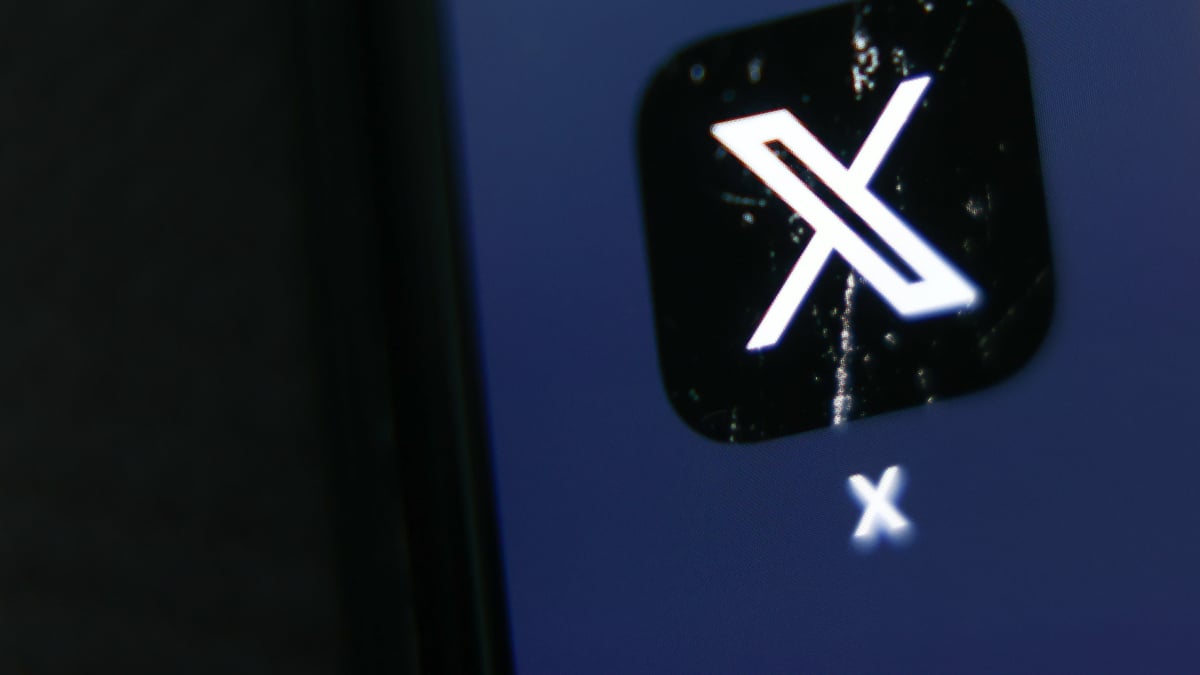Entertainment
X is no longer labeling ads for some users

If you’re scrolling through your feed on X, the platform formerly known as Twitter, and come across a post from an account that you’re not following, you just might be seeing an unlabeled ad.
Multiple users on X have recently reported advertisements showing up on their feed without any disclosure or labeling. The paid ads being served to users appear as organic posts (aka tweets) and show up like non-paid content, right in a user’s feed.
Users have reported seeing these unlabeled ads in both the “For You” feed, which includes algorithmically recommended content, as well as in the “Following” tab, which only displays content posted and reposted by accounts a user follows. Paid ads being run through X’s advertiser platform appear in both feeds regardless.
It’s unclear if X, under owner Elon Musk, decided to remove these ad labels or if this is a temporary glitch. It’s also unclear exactly when X stopped labeling these ads. Some users claim to have initially noticed ads were no longer being labeled a few weeks ago, but it seems like the lack of disclosure on ads has ramped up just this past week.
Nandini Jammi, co-founder of the adtech watchdog nonprofit Check My Ads, put a spotlight on the issue after an X user provided a screenshot of an ad that was served to them without a label. Many users shared their own screenshots of unlabeled ads soon after.
“The lack of labeling misleads consumers and flies in the face of FTC’s guidelines on deceptively formatted ads,” said Sarah Kay Wiley, director of policy and partnerships at Check My Ads, in a statement to Mashable. “As advertisers grapple with just how brand unsafe Twitter has become, this is yet another potentially huge liability for every brand that advertises on Twitter.”

An example showing an unlabeled ad on X with menu options denoting that it’s an advertisement.
Credit: X screenshot
The Federal Trade Commission (FTC) has made it clear multiple times over the years that paid advertisements must be clearly marked as such so as to not mislead consumers to believe they are viewing organic or editorial content. In 2013, for example, the FTC sent a warning to dozens of search engine providers regarding how ads weren’t being clearly disclosed on these online platforms. The FTC stated that businesses should put text-based labels on each ad.
In an effort to protect consumers, the FTC guidelines were updated in recent years to require that even celebrities and influencers clearly disclose when a company was paying for a sponsored social media post or video.
How to tell if you’re being served an unlabeled ad on X
So if an ad isn’t being labeled as such, how can you tell an account is paying X to serve their advertisements? After all, X users can see posts from accounts they are not following if another user that they do follow reposts (aka retweets) the content into their feed. The platform’s recommendation algorithm can also push organic posts into a user’s “For You” feed as well.
It’s actually fairly simple. If a user notices a post in their feed from an account they don’t follow, they can simply click or tap on the three dot icon located in the upper right-hand corner of the specific post. This will open a drop-down menu. If the content was organically posted, the first opinion on the menu provides the user with the ability to follow the account.

The menu on a paid ad on X without a label.
Credit: https://twitter.com/pwrshark/status/1699863176563626353
However, if the post is an ad, this menu provides additional options. For example, if the post is actually a paid ad, the very first menu option changes to “Not interested in this ad,” followed by a sad face emoji. There are also additional menu items that appear only on ads on X, such as “Report ad” and “Why this ad?”
Users discovered that ads were no longer being labeled after noticing they were provided these menu options that only appear on paid ads on X. In addition, the removal of labels disclosing advertisements on X has been reported on both the web and mobile app versions of the platform.

The lack of disclosure on X ads has been reported on the web version of the platform too.
Credit: https://twitter.com/WildScreaminBit/status/1699556564607070590
To be clear, these aren’t third-party ads like the previously mentioned sponsored posts from celebrities and influencers. The unlabeled ads are being served directly through X’s advertising platform, meaning the company is being paid directly by advertisers to run the ads across the social network. The ads are even internally denoted by X as being advertisements, which is why those additional menu items show up on those posts. Yet X is not running these paid ads with a public label or disclosure to let consumers know.
Ad disclosures on X were already confusing for users
In July, before some users had began noticing the removal of labels altogether, the platform had began experimenting with new ad disclosures. As Twitter, the company traditionally marked a paid advertisement with a “Promoted” label at the bottom left-hand side of the tweet, clearly visible beside regularly utilized engagement buttons like “reply” and “retweet.” Over the past month, however, X removed the “Promoted” label from paid ads and instead included a smaller “Ad” label in the upper right-hand corner of the post in its place.
It’s important to note that the platform appears to be switching between the “Promoted” and “Ad” labeling for some, so users should check for either label at the top and bottom of a post before claiming they were served an ad without a label.

Another example of an unlabeled ad on X.
Credit: X screenshot
It’s also key to point out that the platform treats some video ads differently. Twitter Amplify is an exclusive revenue-share program offered to some of the platform’s brand partners that allows video pre-roll ads to appear before videos uploaded within organic posts. The disclosure label for these video ads appears as an overlay on the bottom of the video ad itself and does not appear on the post.
Mashable attempted to reach out to X, but received the following automated response: “Busy now, please check back later.”
-

 Entertainment6 days ago
Entertainment6 days agoSummer Movie Preview: From ‘Alien’ and ‘Furiosa’ to ‘Deadpool and Wolverine’
-

 Business7 days ago
Business7 days agoPetlibro’s new smart refrigerated wet food feeder is what your cat deserves
-

 Entertainment5 days ago
Entertainment5 days agoWhat’s on the far side of the moon? Not darkness.
-

 Business6 days ago
Business6 days agoThoma Bravo to take UK cybersecurity company Darktrace private in $5B deal
-

 Business5 days ago
Business5 days agoHow Rubrik’s IPO paid off big for Greylock VC Asheem Chandna
-

 Business5 days ago
Business5 days agoTikTok faces a ban in the US, Tesla profits drop and healthcare data leaks
-

 Business4 days ago
Business4 days agoLondon’s first defense tech hackathon brings Ukraine war closer to the city’s startups
-

 Business6 days ago
Business6 days agoZomato’s quick commerce unit Blinkit eclipses core food business in value, says Goldman Sachs




























